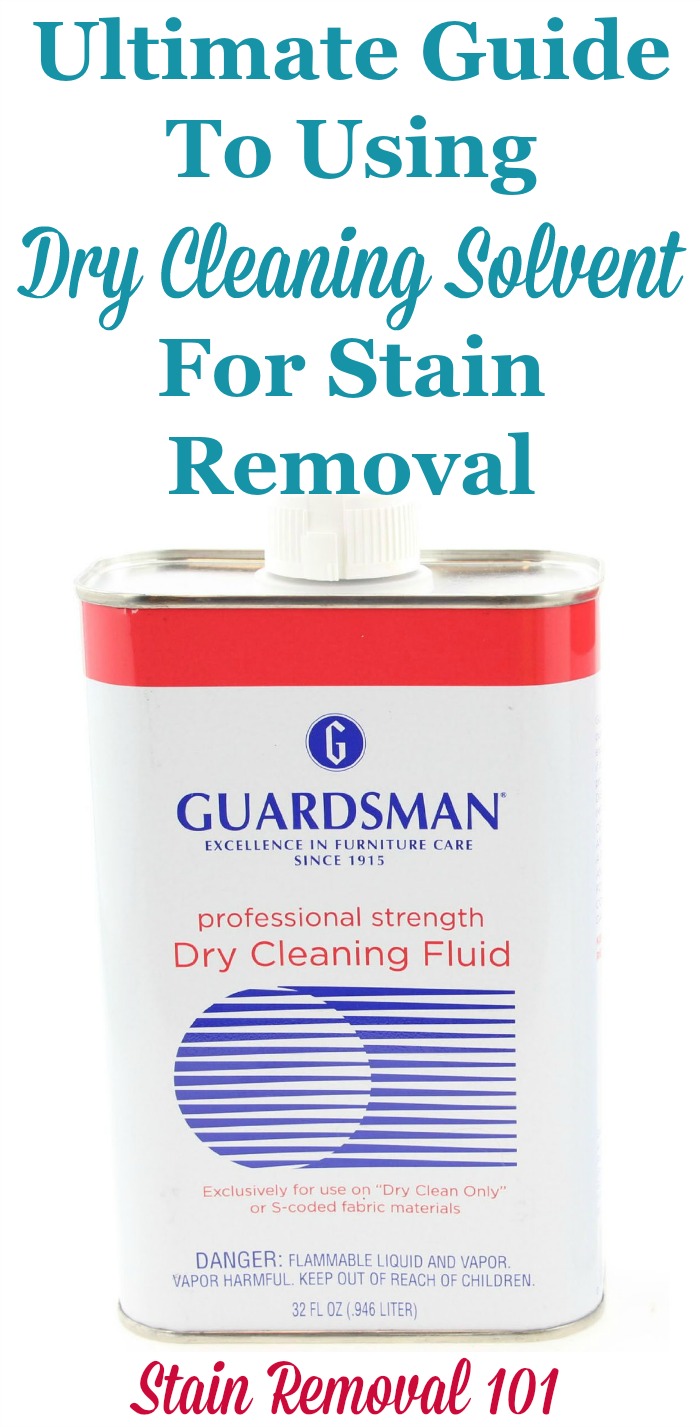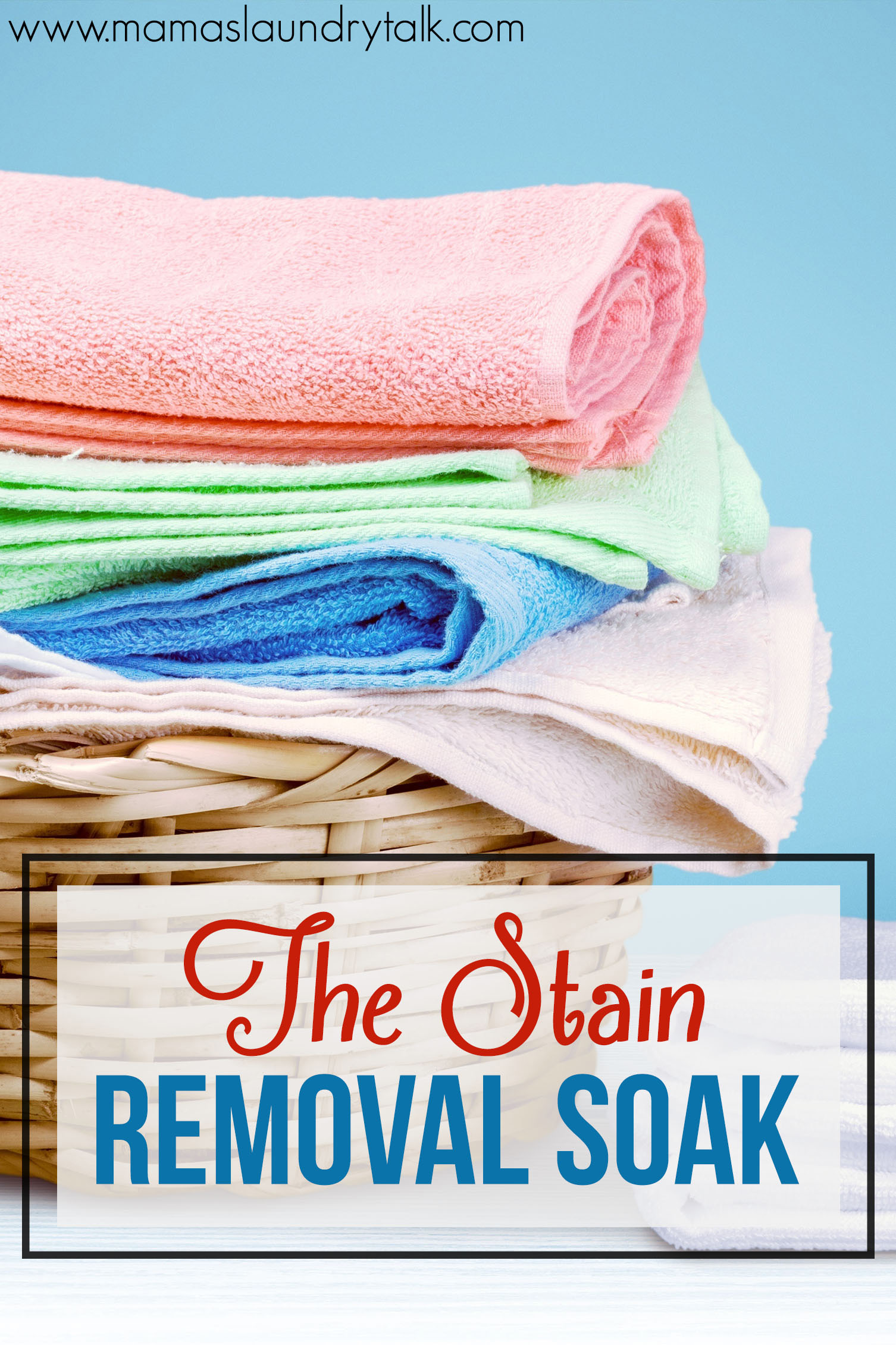Dry cleaning stain removal requires expertise and the right solvents. Swift action can prevent permanent fabric damage.
Stain removal is an essential skill for maintaining the appearance and longevity of your clothing, especially those that are labeled as dry clean only. These garments often comprise delicate fabrics and detailed construction that could be compromised by water or incorrect cleaning methods.
Navigating the dos and don’ts of dry cleaning can be tricky, but understanding the basics is crucial for tackling stubborn stains effectively. Early detection and professional treatment are keys to restoring your garments without altering their color, texture, or shape. Engage with a trusted dry cleaner as soon as unwelcome spots appear to give your clothes the best chance of a full recovery.

Credit: www.stain-removal-101.com
Introduction To Dry Cleaning
Dry cleaning serves as a vital method for maintaining garments that are too delicate or intricate to handle through traditional washing. The term ‘dry cleaning’ might suggest a lack of moisture, but in fact, it relies on specialized liquids to remove soil and stains from fabrics. This process not only cleans but also preserves the integrity and appearance of high-quality materials. The following sections will delve into its intricacies and benefits.
Understanding Dry Cleaning
Dry cleaning is often shrouded in mystery, but understanding this cleaning process is essential for those seeking to extend the life of their valuable clothing. It utilizes chemical solvents, most commonly perchloroethylene, which gently yet effectively lift stains without compromising fabric structure. Unlike water, these solvents do not cause shrinkage or color bleeding, a feature particularly beneficial for delicate fabrics such as silk, wool, and synthetics.
Benefits Of Dry Cleaning For Stain Removal
- Effectiveness: Dry cleaning solvents penetrate fabric fibers, dissolving and absorbing grease and oil-based stains with ease.
- Protection: Fabrics retain color, texture, and form, ensuring an item’s longevity.
- Convenience: Professional dry cleaners provide expert finishing services that remove wrinkles and restore the garment’s original crispness.
- Odor Removal: The solvents used in dry cleaning can also eliminate odors that traditional washing might not tackle.
Common Misconceptions About Dry Cleaning
Despite its many benefits, misconceptions around dry cleaning persist. A prevalent myth is that dry cleaning is only for suits and formal wear. In truth, a range of items, from business attire to bed linens, can undergo dry cleaning for superior results. Others believe dry cleaning weakens fabric integrity; however, the opposite is true—the process prevents the wear and tear associated with conventional washing.
Understanding the advantages and addressing the myths of dry cleaning can transform how you care for your wardrobe, ensuring each piece remains pristine for years to come.
Types Of Stains And Their Treatments
Dry Cleaning Stain Removal 101:
Navigating through the world of stains can often feel like a tricky puzzle. Whether it’s a cherished piece of clothing or a must-have accessory, knowing how to tackle different stains efficiently is crucial. The first step to becoming a stain removal guru is understanding the various types of stains and the specific treatments each requires. Dive into the nuances of stain identification and the art of making clothes look pristine once more!
Identifying Different Stain Categories
Stains come in all shapes and sizes, and their sources are as diverse as their appearances. Proficient cleaning demands the ability to determine what caused the stain—only then can you choose the right removal agent. Let’s classify common stains and discuss the tailored approach for each category.
Protein-based Stains: Blood, Sweat, And Food
These natural residues can cling stubbornly to your garments. The key to removing protein-based stains is a gentle approach:
- Pre-treat with a protein-specific remover or cool water.
- Avoid hot water as it cooks the protein, setting the stain.
Oil-based Stains: Grease, Makeup, And Lotions
Oil-based stains require a solvent-based cleaner to dissolve the greasy residue:
- Apply dry cleaning solvent or a degreaser to the affected area.
- Gently blot until the stain lifts, taking care not to rub it in further.
Tannin Stains: Wine, Coffee, And Tea
The tannins in beverages like wine, coffee, and tea create pesky stains that are best treated without cream or soap:
- Flush the stain with cold water.
- Apply a mild vinegar solution, then rinse thoroughly.
Dye Stains: Ink, Dyes, And Color Transfers
The vivid colors from ink, dyes, and color transfers might look daunting but are manageable with the right solvents:
- Alcohol-based cleaners often do the trick.
- Dab on the solvent, then rinse with cool water to avoid setting the stain.
Combination Stains: Sauces, Makeup, And Various Spills
Stains that combine oils with other elements, such as sauces or makeup, can be tricky:
- Start by addressing the oily component with a solvent.
- Next, treat the remainder of the stain based on its specific category (protein, tannin, etc.).
The Dry Cleaning Process
The Dry Cleaning Process seems shrouded in mystery, but understanding it can ensure your wardrobe maintains impeccable condition. Unlike traditional laundering, dry cleaning removes stains and dirt not with water but through a process that involves specialized solvents, treating and cleaning your garments with care and precision. Let’s delve deeper into how your stained outfits return to you spotless from the dry cleaner.
Pre-treatment: The First Step In Stain Removal
Pre-treatment is crucial for effective stain removal. Dry cleaners first examine garments to identify stains and their origins. They then apply a specific pre-treatment solution that helps break down the stain for easier removal. This tailored approach ensures the stain is lifted without damaging the fabric.
Solvents Used In Dry Cleaning
The primary solvent used in dry cleaning is perchloroethylene, often referred to as ‘perc’. Perc is a highly effective cleaning agent, adept at dissolving oils and fats which a water-based process may not remove. In recent years, for environmental and health reasons, alternative solvents like hydrocarbon, silicone-based solvent, and liquid carbon dioxide have gained popularity.
The Role Of Detergents And Additives
Aside from solvents, detergents and additives play a significant role in the dry cleaning process. They work alongside solvents to enhance their cleaning power, ensuring your garments are not only stain-free but also maintain their color and texture. Additives such as sizing agents can even restore garment structure, providing a crisp, fresh finish.
The Cleaning Cycle: Machines And Techniques
The cleaning cycle involves placing garments into specialized dry cleaning machines that resemble traditional washing machines. These machines use rotational movement and solvent immersion to gently but thoroughly cleanse the fabric. Technological advancements have led to machines that are more efficient, using less solvent, and offering various cycle types to suit different garment needs.
Post-cleaning: Finishing Touches On Garments
Once cleaned, the finishing touches on garments bring them back to life. This includes pressing, steaming, and ironing to eliminate any wrinkles, as well as minor repairs such as replacing buttons. The garment is finally inspected for any lingering stains or damages, ensuring your item returns to you in top condition, ready to make an impression.

Credit: www.gentlemansgazette.com
Diy Vs. Professional Dry Cleaning
Encountering a stain on your favorite garment can be disheartening. The battle between attempting a DIY stain removal and opting for professional dry cleaning services is a common dilemma. While some stains can be addressed with home remedies, others require the expertise of a professional. Understanding the dynamics of DIY versus professional dry cleaning is crucial for garment longevity.
When To Treat Stains At Home
Simple stains from substances like mud or coffee often come out with DIY methods. Immediate action is key:
- Blot, don’t rub, to prevent the stain from spreading.
- Use mild detergents or stain-specific removers.
- Always test the cleaning solution on a hidden area first.
Risks Of Diy Stain Removal
Embarking on a DIY stain removal journey can be risky. Incorrect techniques can set the stain permanently or damage the fabric. Risks include:
- Using inappropriate cleaning agents that may cause discoloration.
- Over-saturating the fabric, potentially leads to shrinkage or warping.
- Heat from irons or dryers can cause stains to become permanent.
Benefits Of Professional Dry Cleaning Services
Professional dry cleaners offer a safe and effective solution for removing difficult stains. Their expertise includes:
| Benefit | Description |
|---|---|
| Advanced Techniques | Professionals employ industry-grade solvents and methods. |
| Knowledge of Fabrics | Expert understanding of different materials ensures proper care. |
| Time-Saving | Delegating the task allows for better use of personal time. |
How To Choose A Dry Cleaning Service
Selecting the right dry cleaning service is essential. Points to consider include:
- Reputation: Look for services with positive reviews and testimonials.
- Experience: Choose cleaners with a proven track record in treating similar stains and fabrics.
- Price: Compare rates, but remember that the lowest price may not equate to the best quality.
- Chemicals Used: Ensure the dry cleaner uses eco-friendly and fabric-safe solvents.
Maintaining And Protecting Your Garments
We treasure our closets filled with fine garments and premium fabrics, yet often overlook the fundamental care practices that preserve their pristine condition. Delving into Dry Cleaning Stain Removal 101, let’s master the art of maintaining and protecting your wardrobe investments. From everyday wear to special occasion attire, adopting clever preventative strategies ensures longevity and immaculate presentation. Here is your guide to becoming a savvy guardian of your garments.
Preventative Measures For Stain Avoidance
Steering clear of stains before they occur is a cornerstone of garment care. Start with a few simple habits:
- Immediate Action: Treat spills and splatters promptly to prevent setting.
- Mindful Eating: Be cautious during meals; use napkins and avoid eating while walking.
- Protection Gear: Don aprons or protective clothing when cooking or engaging in activities prone to causing stains.
- Personal Care Products: Apply makeup, perfumes, and deodorants before dressing, allowing them to dry to avoid fabric contact.
Proper Storage And Handling Of Delicate Items
Ensuring the longevity of delicate fabrics hinges on meticulous storage and handling. Adhere to the following guidelines:
- Clean Before Storing: Ensure garments are clean before placing them in your wardrobe to prevent attracting pests.
- Avoid Overcrowding: Provide ample space in your closet to prevent wrinkles and fabric strain.
- Appropriate Hangers: Use padded or wooden hangers for suits and dresses to maintain shape.
- Climate Control: Keep your storage area dry and cool to ward off mold and mildew.
Routine Care And When To Dry Clean
Regular maintenance is key in upholding the brilliance of your clothes. Implement a care routine with:
- Spot Cleaning: Address minor soiling with gentle spot cleaning where appropriate.
- Home Laundering: Wash suitable items at home according to label instructions, using gentle detergents.
- Professional Dry Cleaning: For delicate, ornate, or structured pieces, or when fabrics show grease or aged stains, opt for professional services. Familiar items include suits, silk blouses, or formal dresses.
Be mindful of your garment’s needs: some may require cleaning after every wear, while others can go several wears without. Trust your judgment and sensory cues like sight and smell.
Understanding Fabric Care Labels And Instructions
Comprehending the symbols and directions on fabric care labels is critical for proper maintenance. Explore these tips:
| Symbol | Meaning |
|---|---|
 |
Washing: Indicates water temperature and machine cycle. |
 |
Bleaching: Shows if bleaching is permissible. |
 |
Dry Cleaning: Suggests recommended dry cleaning instructions. |
 |
Ironing: Advises on the iron’s heat setting. |
 |
Drying: Provides tumble or air-drying guidelines. |
Always study and follow the care label to avoid damaging your garments. In cases of doubt, professional dry cleaners can provide expert advice and service.

Credit: www.mamaslaundrytalk.com
Faqs And Troubleshooting
Successful stain removal is often akin to a science; each mark requires its own special treatment. For those who have experienced the misfortune of staining their prized garments, knowing how to address these issues can be a life-saver. In our Dry Cleaning Stain Removal 101 series, it’s time to delve deeper into some of the most pressing questions and troubleshoot common problems encountered in the battle against blemishes.
Addressing Common Stain Removal Questions
When accidents happen, quick thinking is key. Here, we tackle the most frequently asked inquiries to help you protect your wardrobe:
- Should I rub a stain to remove it? Avoid rubbing as it can spread the mark and ingrain it further into the fabric.
- Can water remove every stain? No, water can set certain types of stains, such as those from tannin or ink. Always test a small, inconspicuous area first.
- Are home remedies effective for stain removal? Some may work, but they often carry a risk of damaging the fabric or setting the stain.
Dealing With Stubborn Or Set-in Stains
Set-in stains can be a nightmare, but not all hope is lost. Here are some tips to tackle them:
- Avoid home heat treatments such as ironing or using a hairdryer, as they may permanently set the stain.
- Gently blot the area with a dry cleaning solvent, then press with a clean cloth to lift as much of the stain as possible.
- If a stain persists, consider taking the garment to a professional dry cleaner who specializes in advanced stain removal techniques.
Tips For Dealing With Sensitive Fabrics
With delicate or specialty fabrics, a standard approach might not cut it. Be mindful of these pointers:
| Fabric Type | Recommended Treatment |
|---|---|
| Silk | Avoid water, which can cause rings; use a dry clean solvent. |
| Wool | Spot clean with lukewarm water; avoid high heat. |
| Leather | Specialty cleaning products are required; avoid water to prevent warping. |
Aftercare: Preserving The Quality Of Dry Cleaned Items
Once your garments return from the dry cleaner, proper aftercare will extend their life and maintain their appearance:
- Remove plastic covers to allow fabrics to breathe.
- Store items in a cool, dry place to prevent mildew or yellowing.
- For frequent wear items, regular cleaning can prevent the buildup of oils and dirt that contribute to stains.
Frequently Asked Questions For Dry Cleaning Stain Removal 101
Can Dry Cleaning Remove All Stains?
Dry cleaning is effective for many stains, but not all. It is best for oil-based stains, whereas water-based stains are trickier. Always check with professionals, as some stains may be set if improperly treated.
How Long After Staining Should I Dry Clean?
Ideally, bring the stained item to a dry cleaner as soon as possible. Prompt treatment increases the likelihood of successful removal. Waiting too long can allow the stain to set, making it harder to remove.
What Are Common Dry Cleaning Stain Removal Methods?
Dry cleaners use solvent-based cleaning agents, spotting chemicals for pre-treatment, and professional expertise to remove stains. Techniques vary by stain type, fabric sensitivity, and colorfastness to ensure fabric safety and effectiveness.
Is Pre-treatment Necessary For Dry Cleaning Stains?
Pre-treatment is important for stubborn stains. It involves applying specific agents to the affected area before the main cleaning process. It helps break down the stain and enhances the overall cleaning efficacy.
Conclusion
Navigating the challenges of dry cleaning stains can be simpler than expected. With the right techniques and a bit of patience, even the toughest spots can fade away. Remember, time is of the essence, so treat those spills quickly. Trust in professional methods, but don’t overlook home remedies—they’re often just as effective.
Goodbye stains, hello pristine garments!

